Are We All Racist?
INTERACTION DESIGN
GRAPHIC DESIGN
PRINT DESIGN
VIDEO
CULTURAL PROBE
This body of work is a compilation of sensory ethnography for design research to understanding the patterns of behavior and gaining insights into how my subjects viewed the subject of racism and how it affected them.
The Ethnographic Research
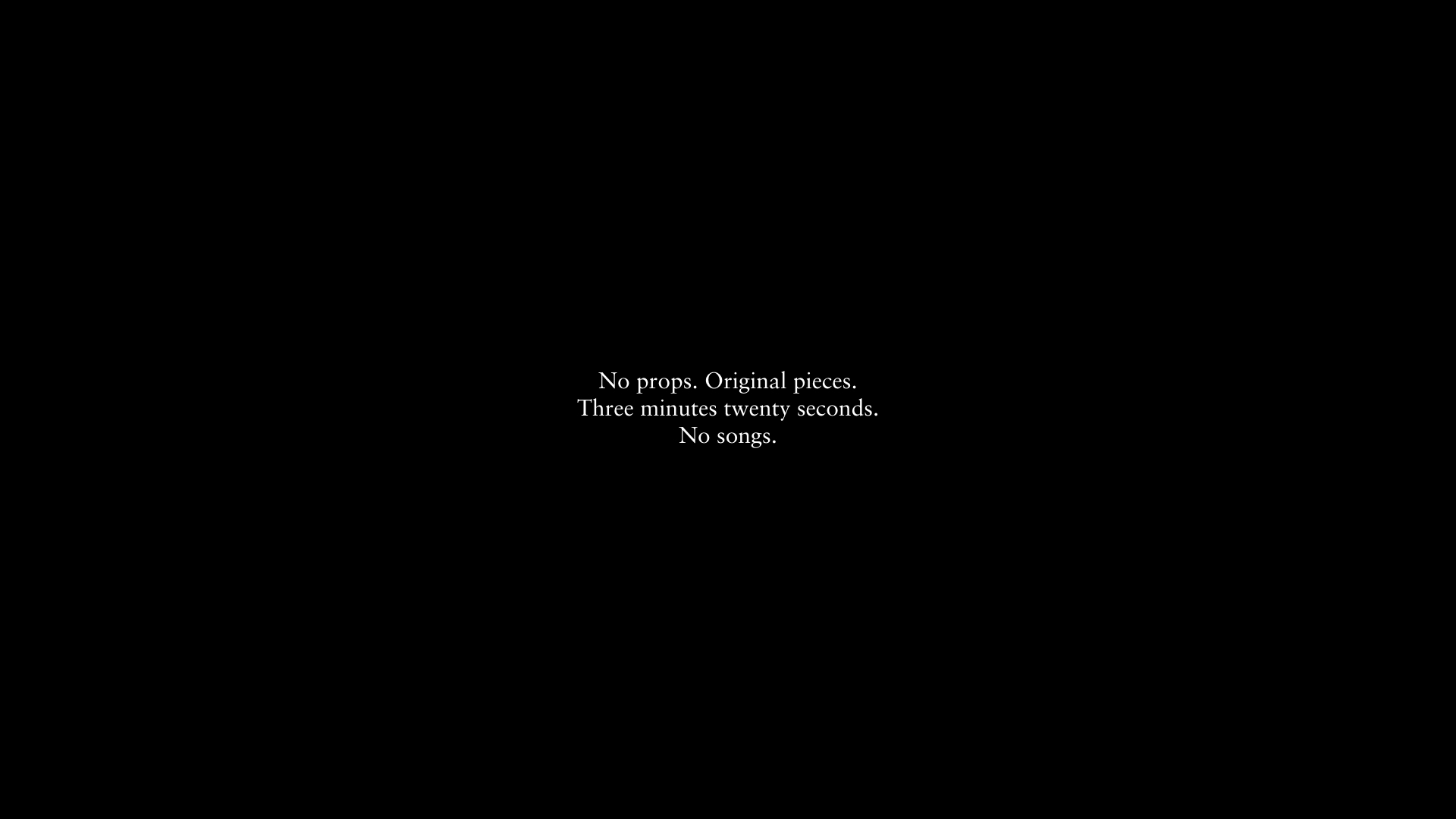
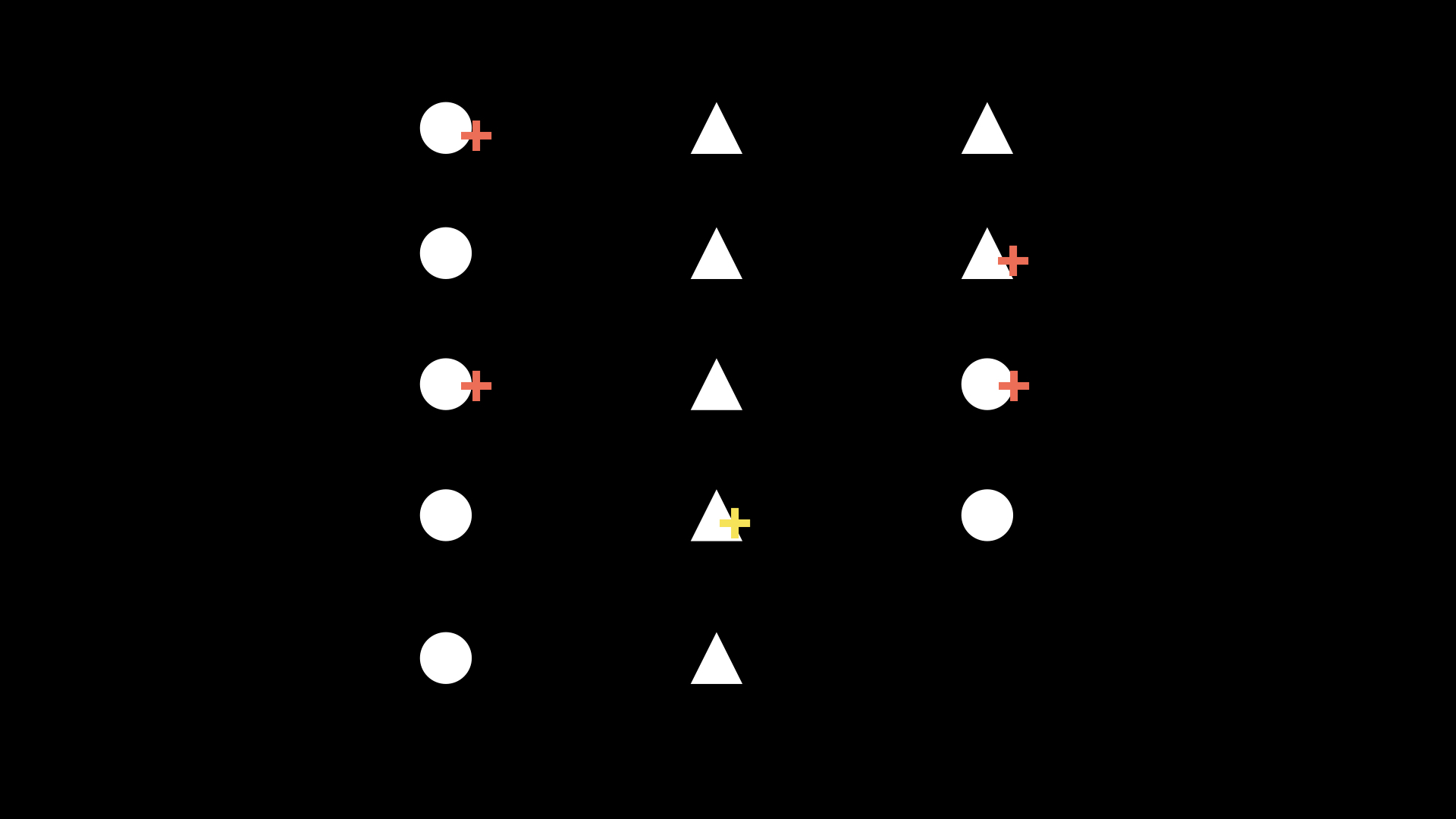
The purpose
The ethnographic research of the place, The Nuyorican Poets Cafe was a visual representation of an area that's considered a safe space. It is the perfect space to have a sensorial experience that had the relevant group of individuals who belong to marginalized communities. Hence, it couldn't be photographed or documented
in any way.
My documentation of the performers there was coded to be respectful of their privacy and the policies of the place. I used symbols to represent their ethnicity, race, and gender to get an understanding of who is using poetry as a platform.
The ethnographic research of the place, The Nuyorican Poets Cafe was a visual representation of an area that's considered a safe space. It is the perfect space to have a sensorial experience that had the relevant group of individuals who belong to marginalized communities. Hence, it couldn't be photographed or documented
in any way.
My documentation of the performers there was coded to be respectful of their privacy and the policies of the place. I used symbols to represent their ethnicity, race, and gender to get an understanding of who is using poetry as a platform.
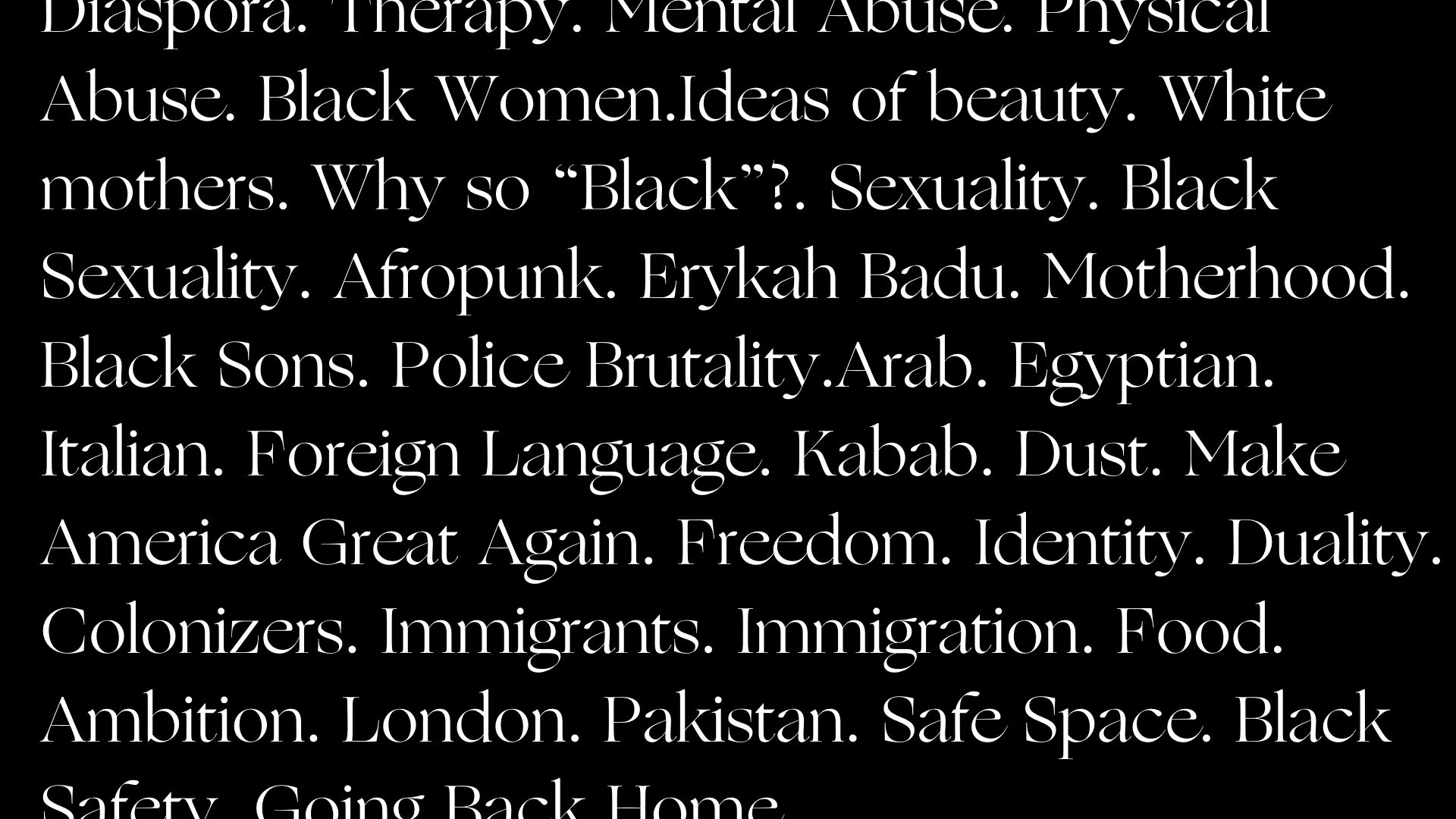
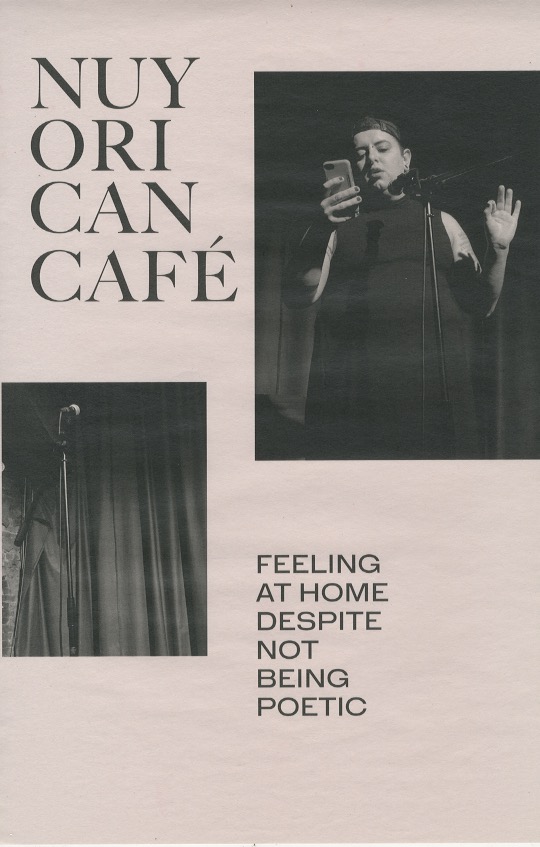
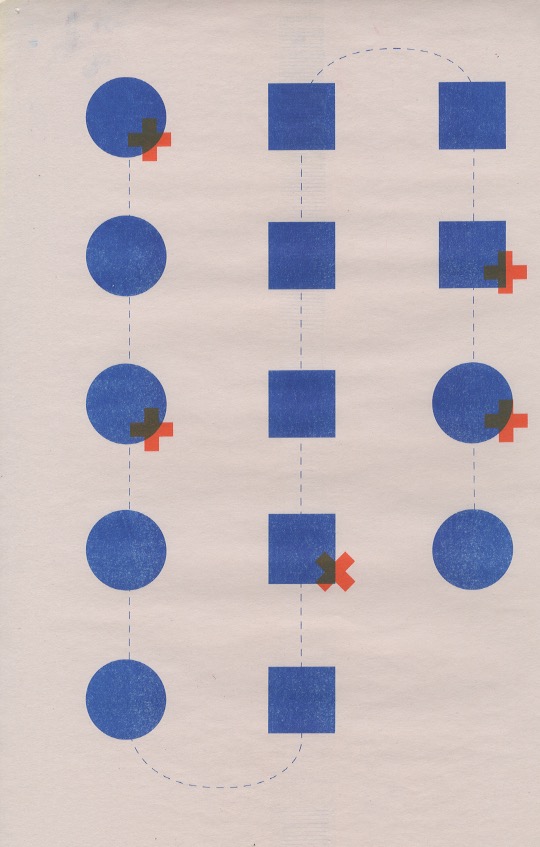
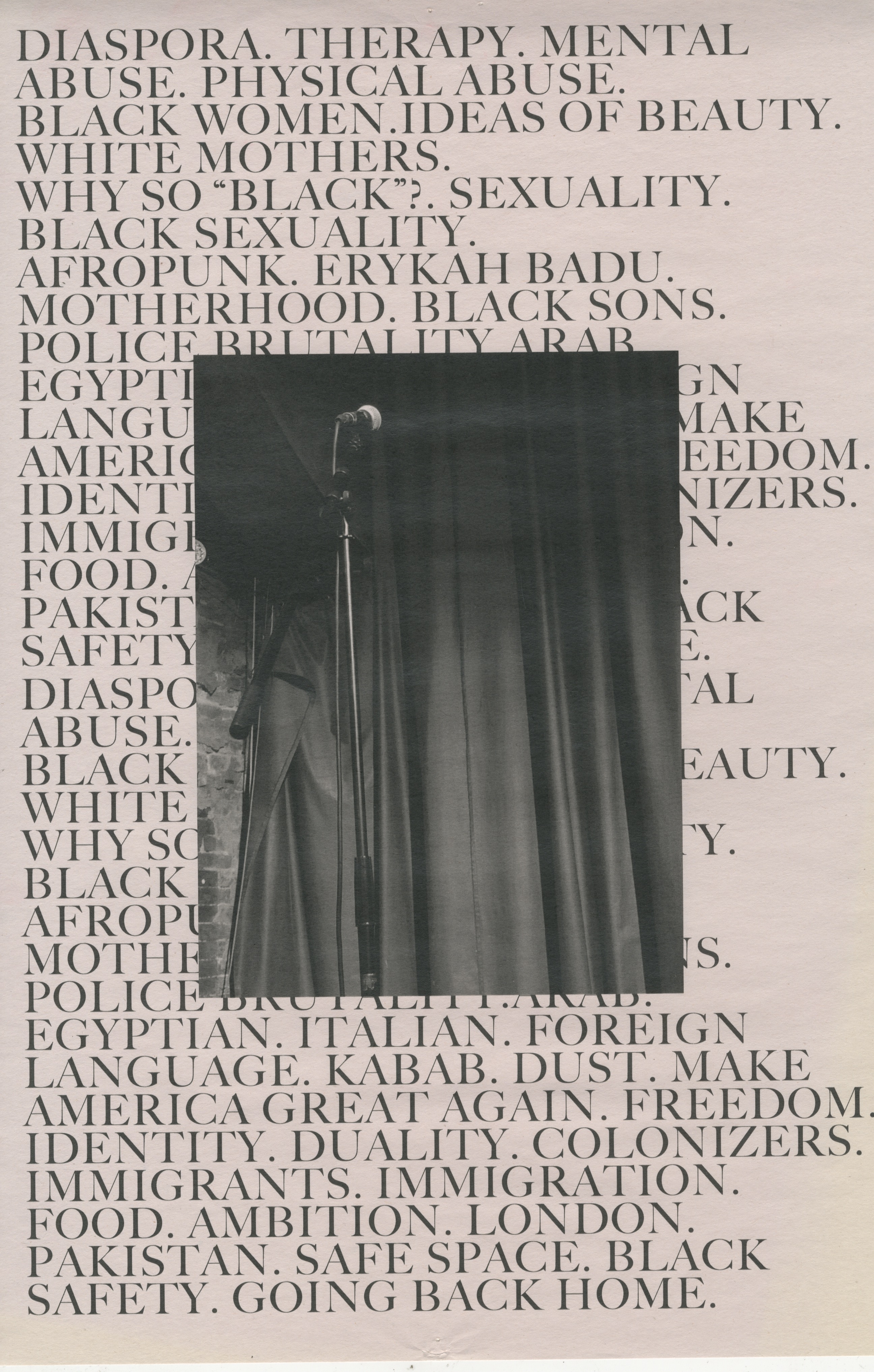
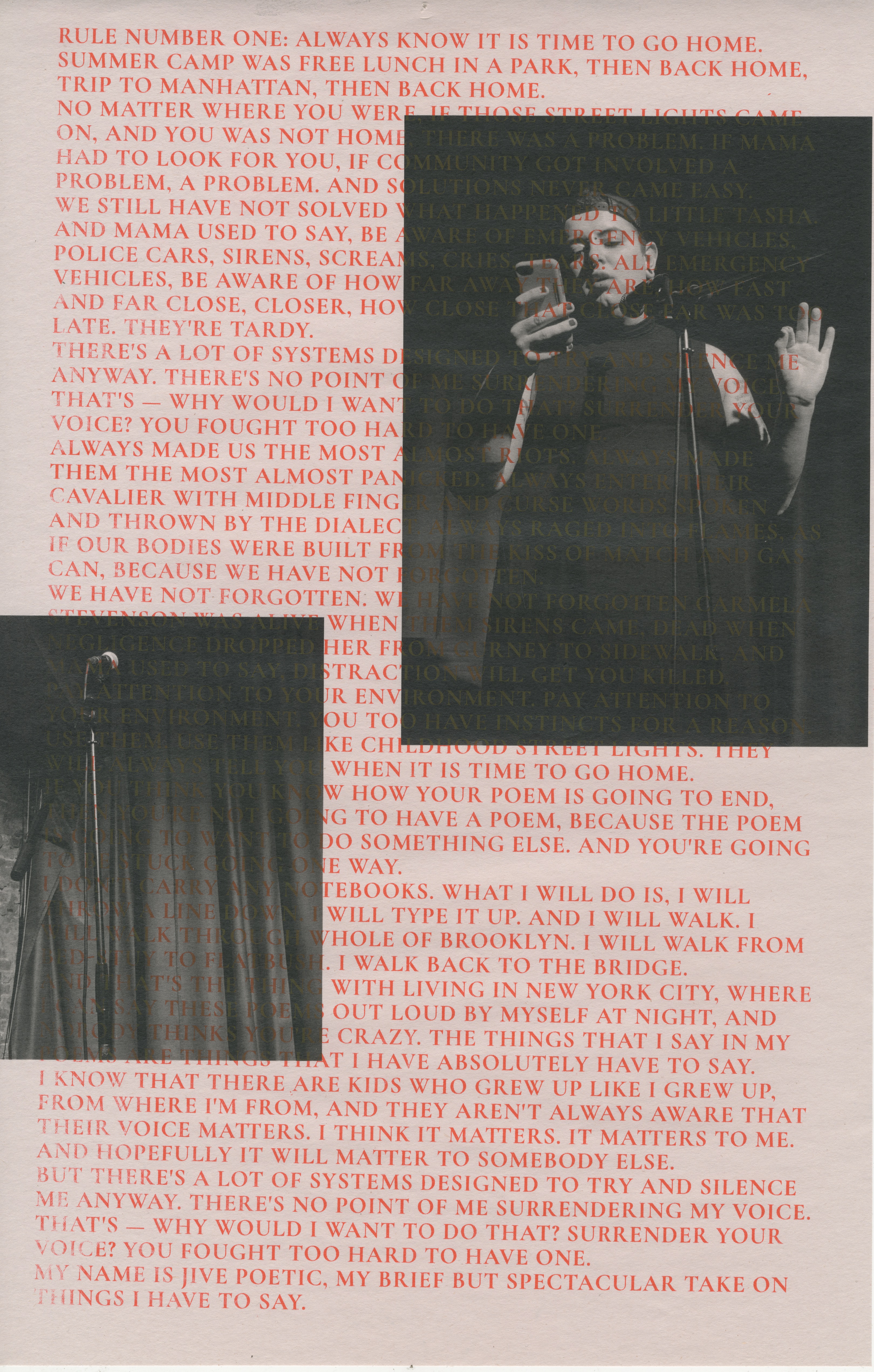
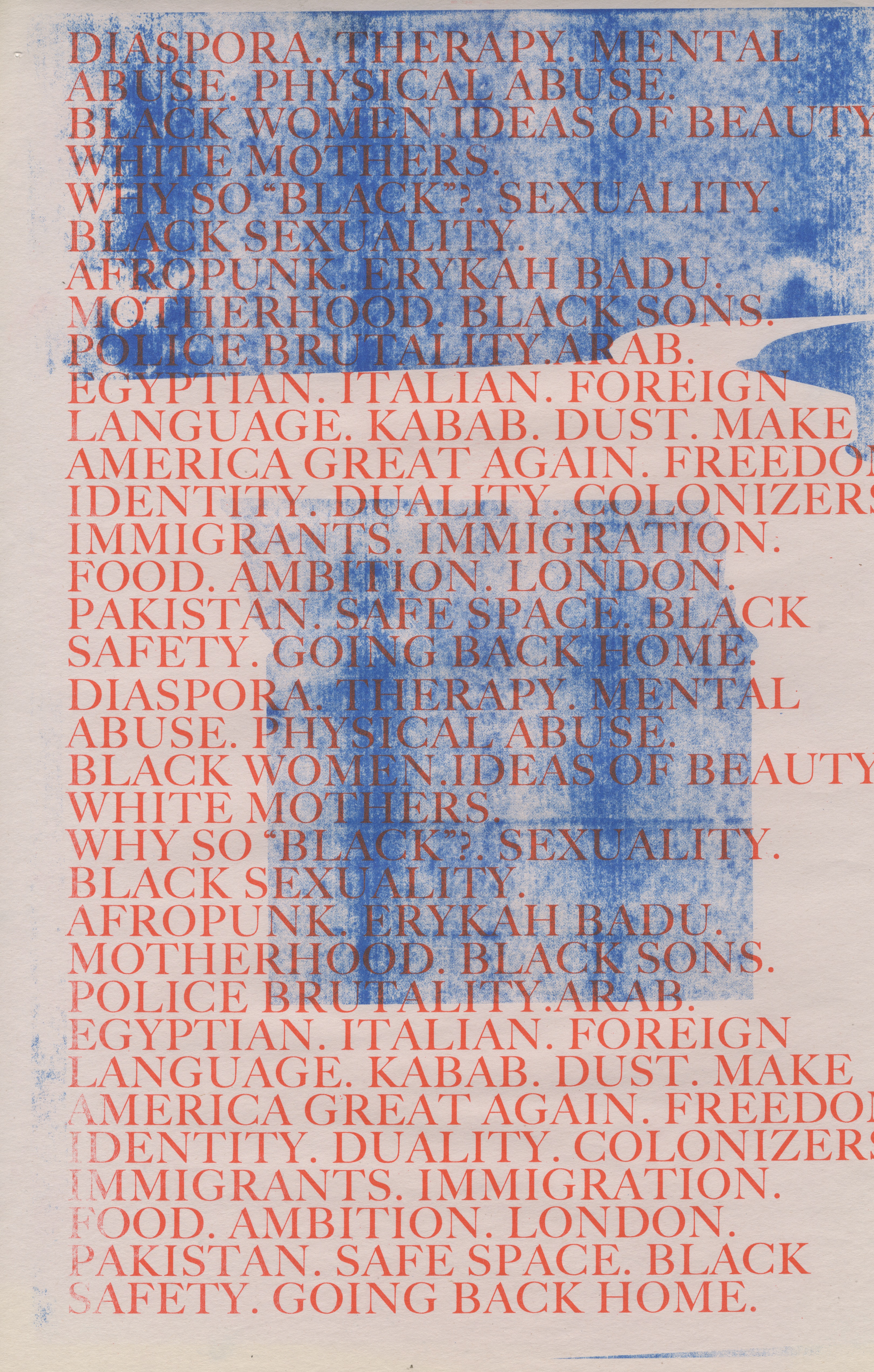
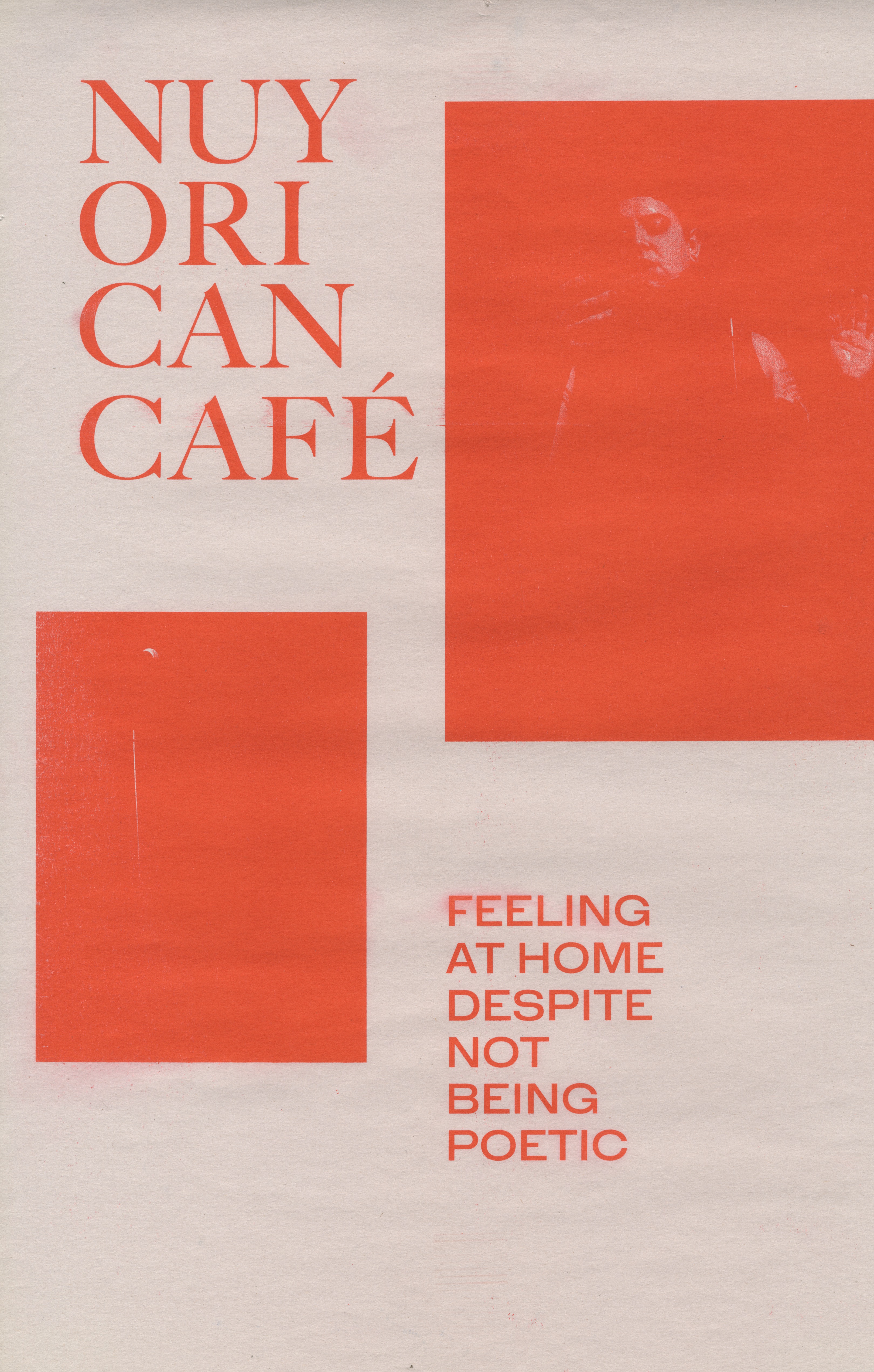
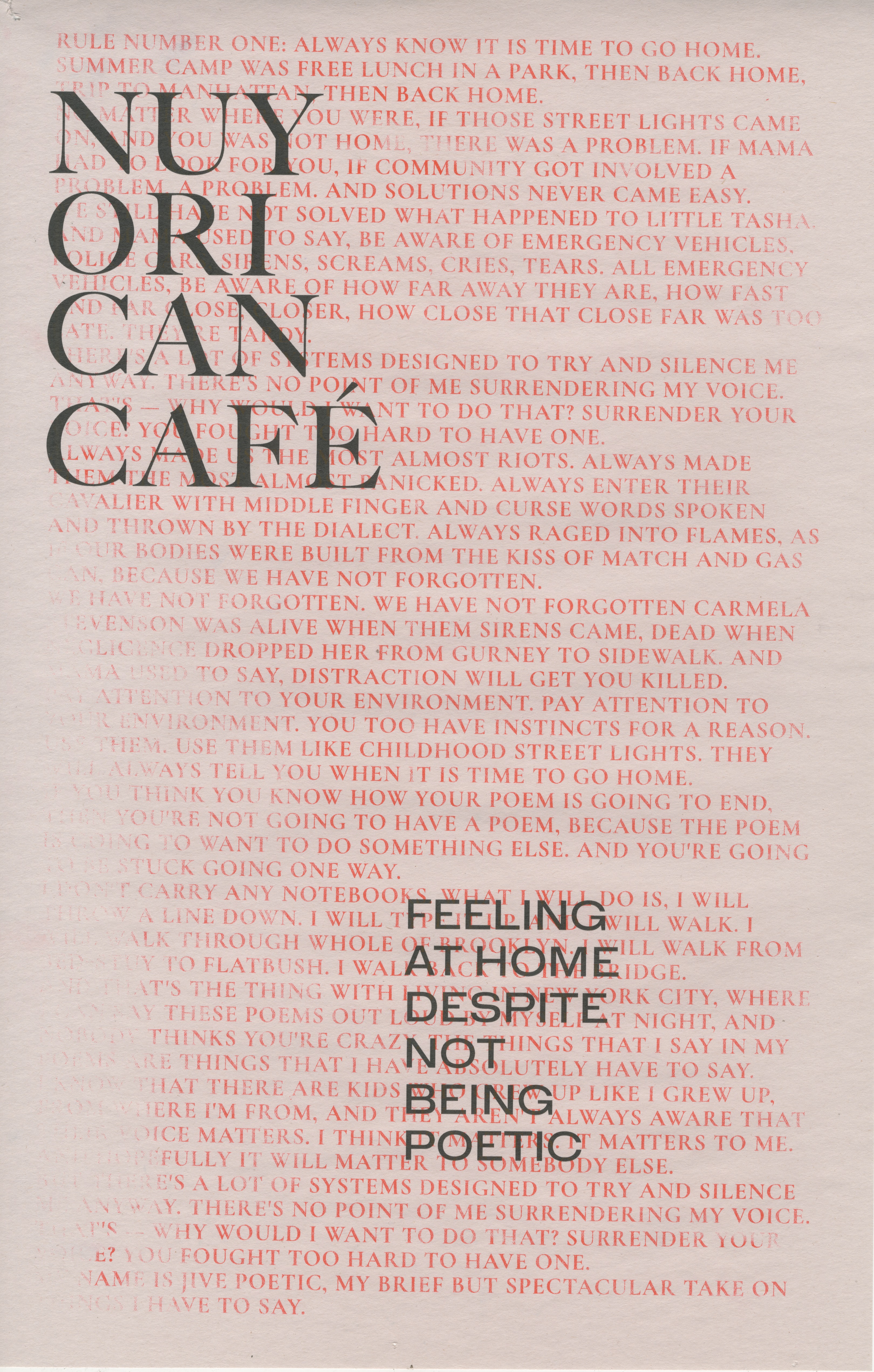
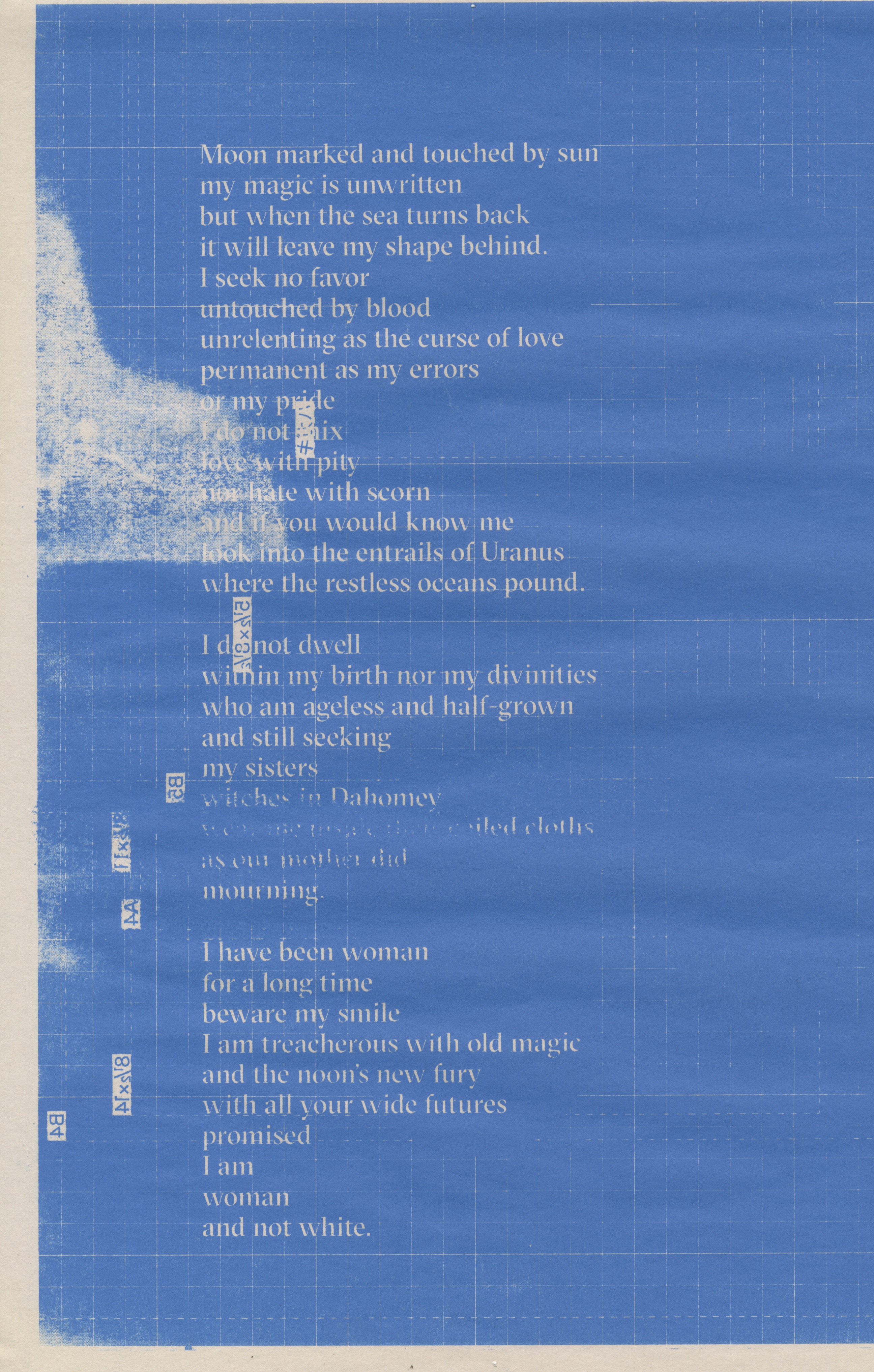
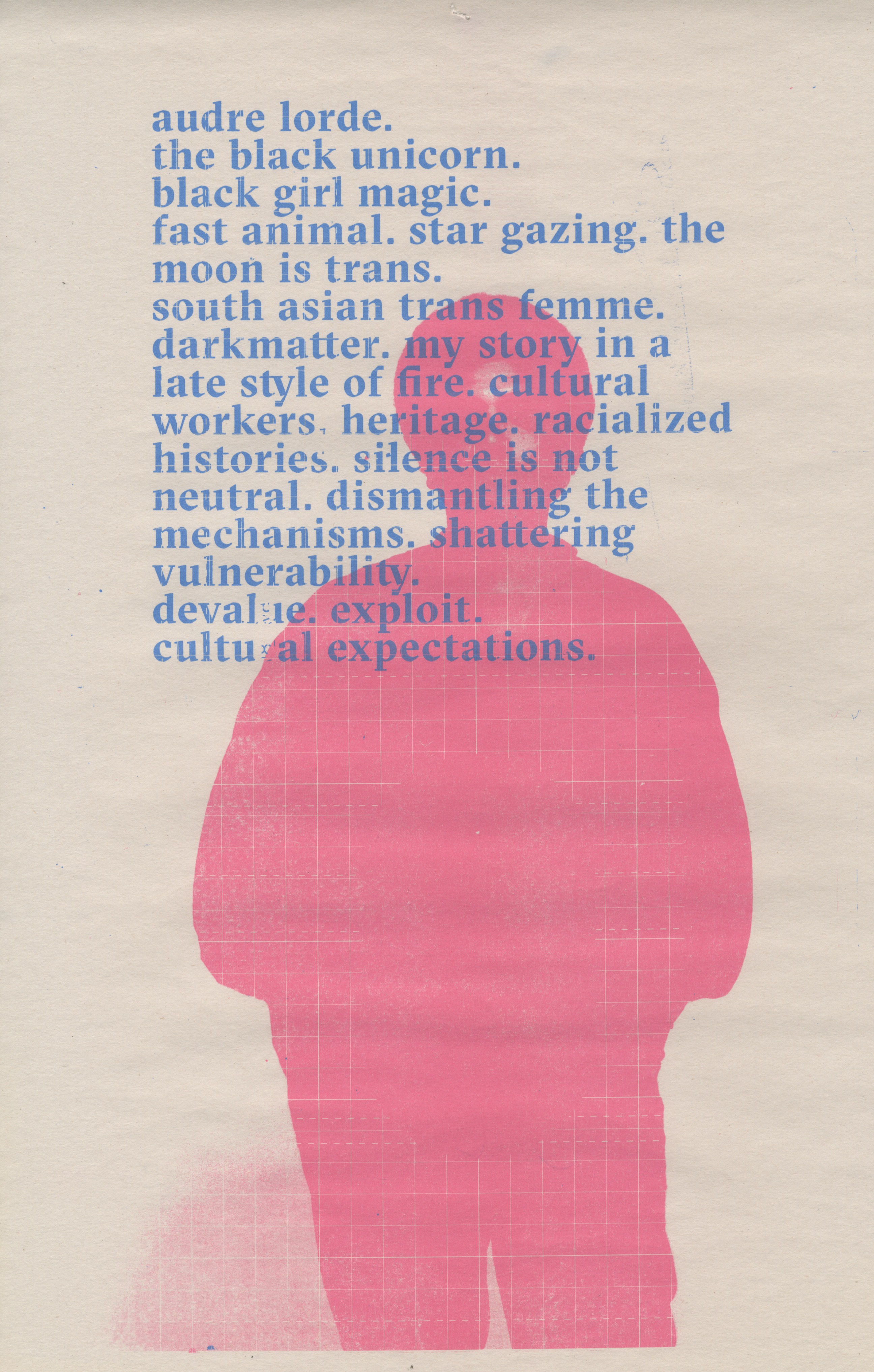
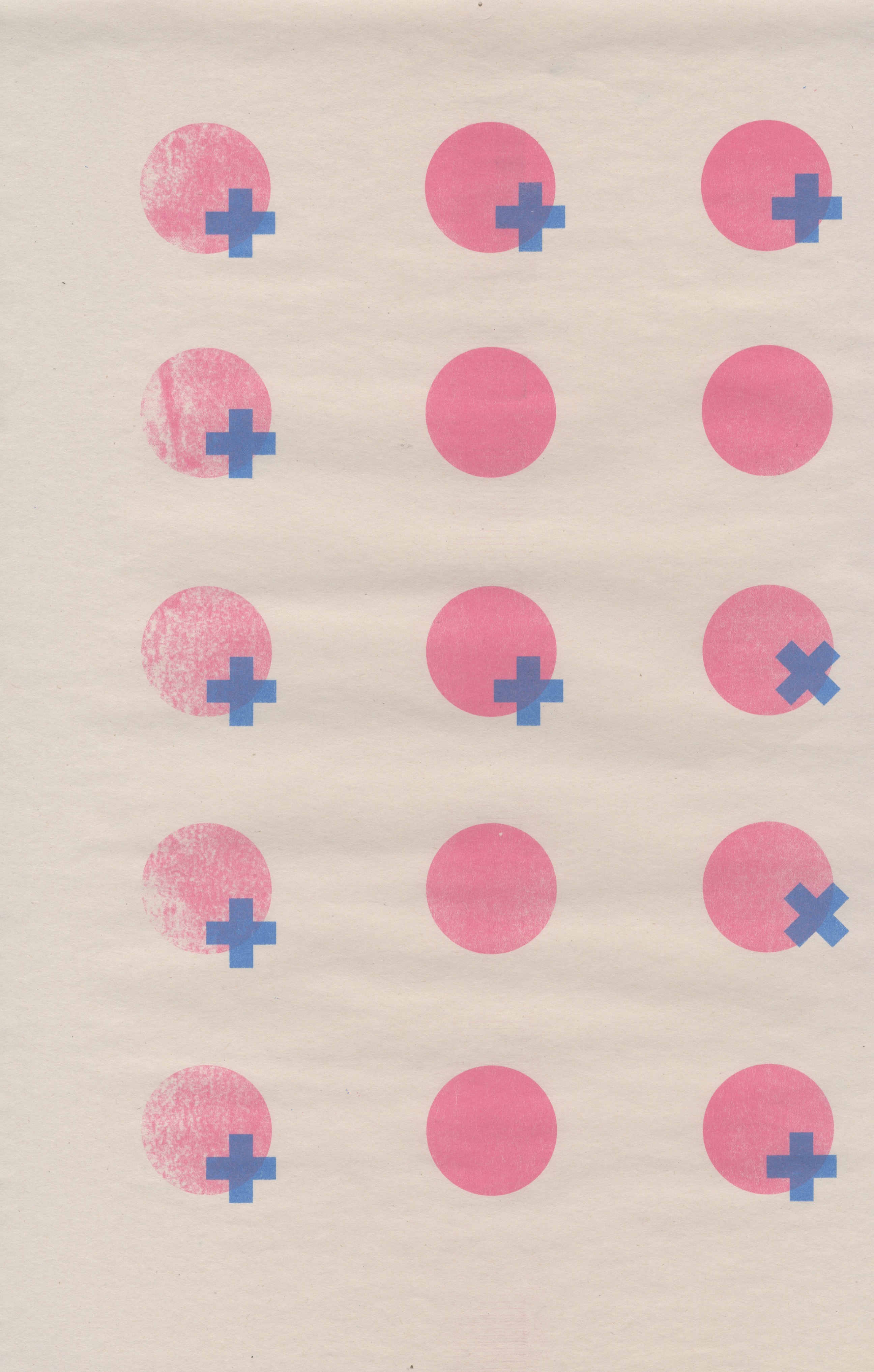
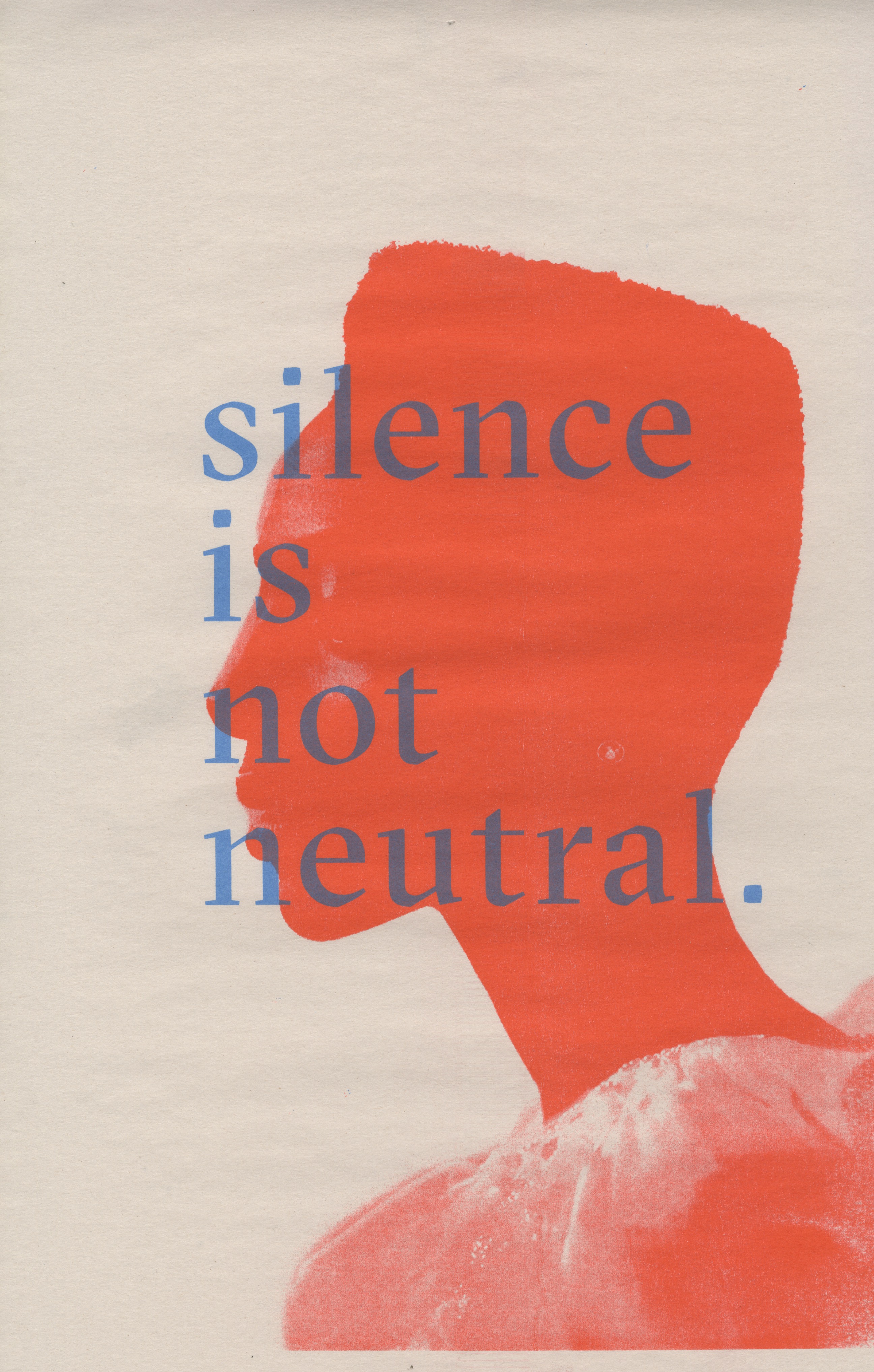
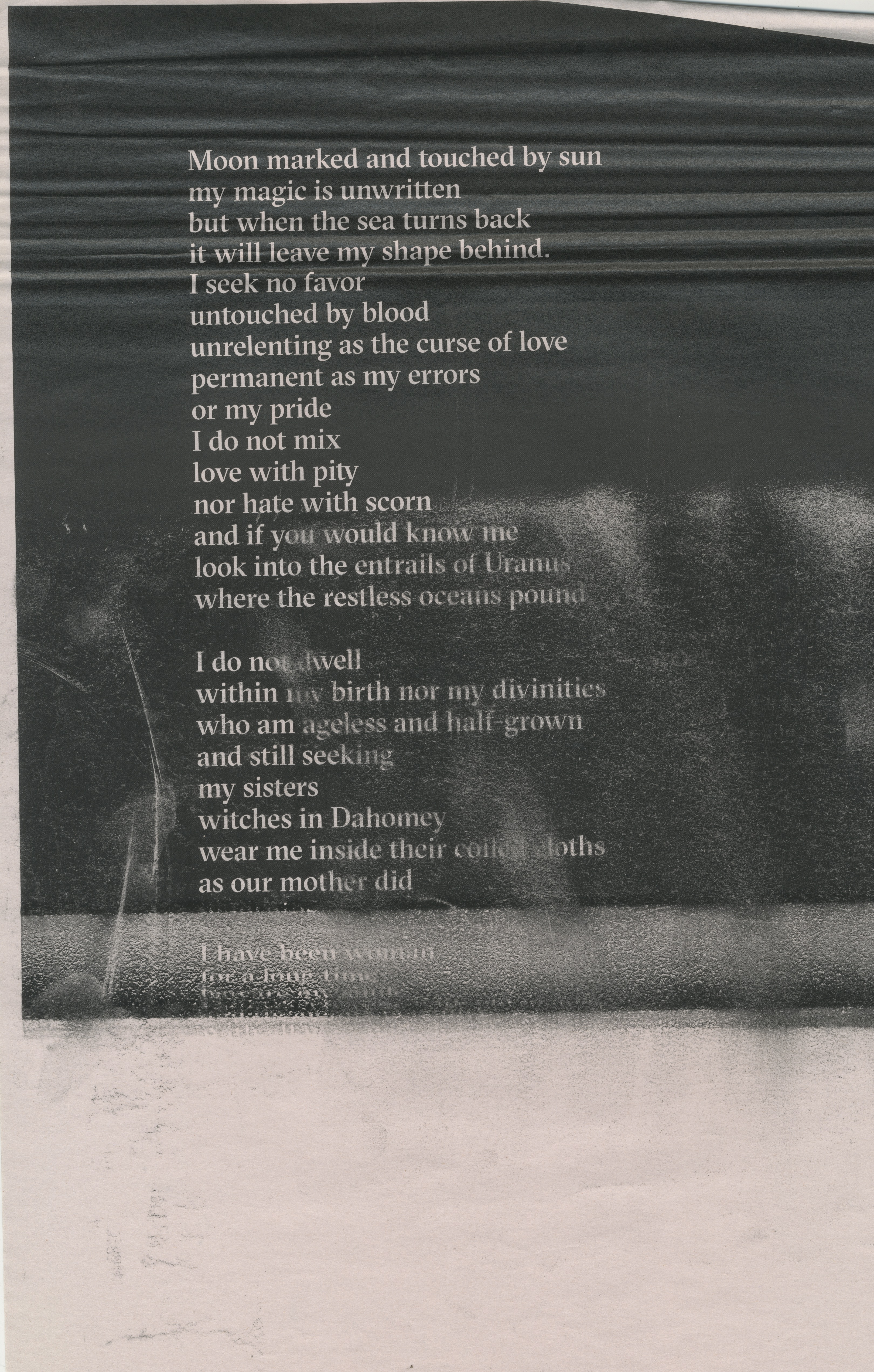
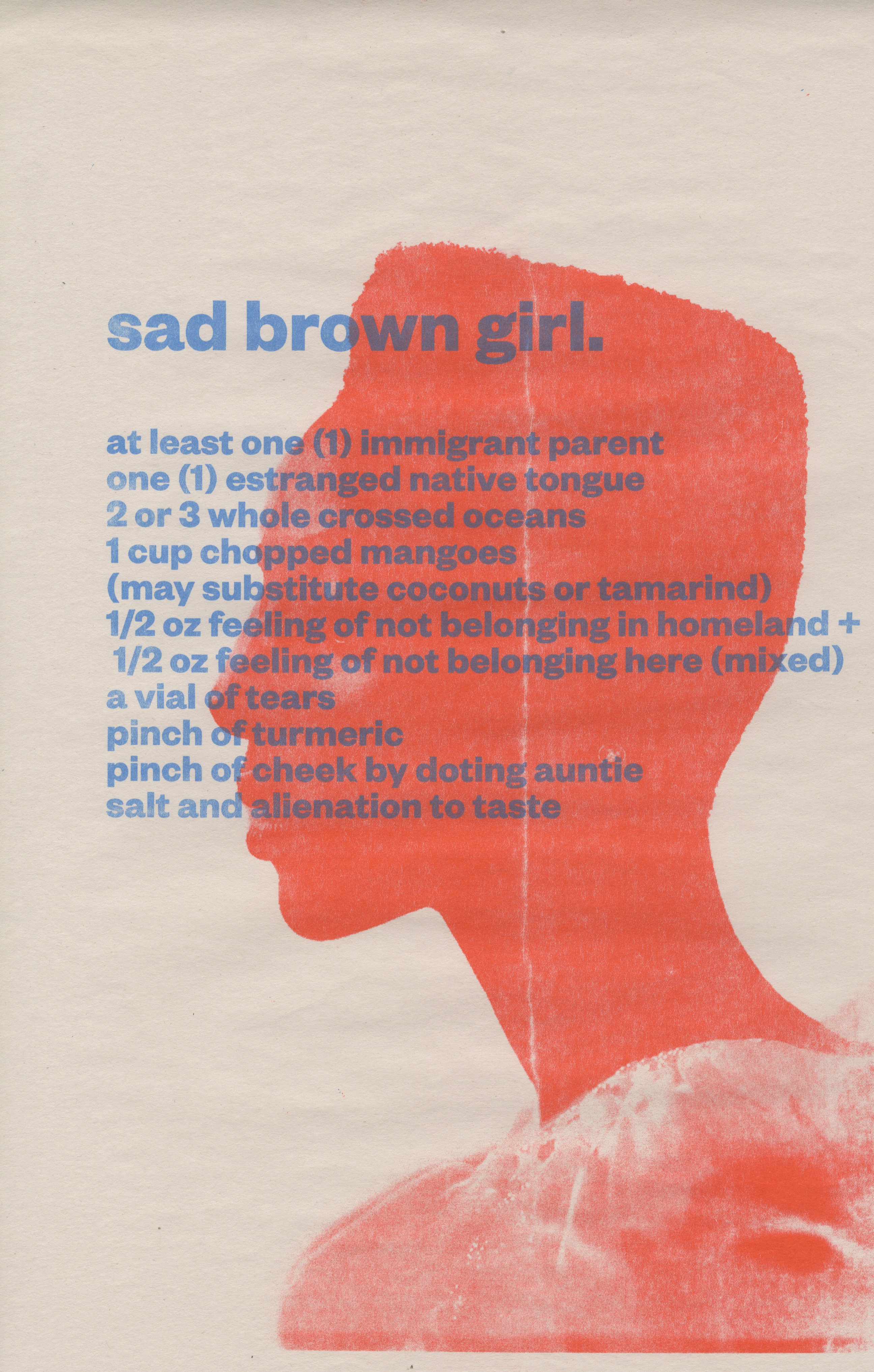
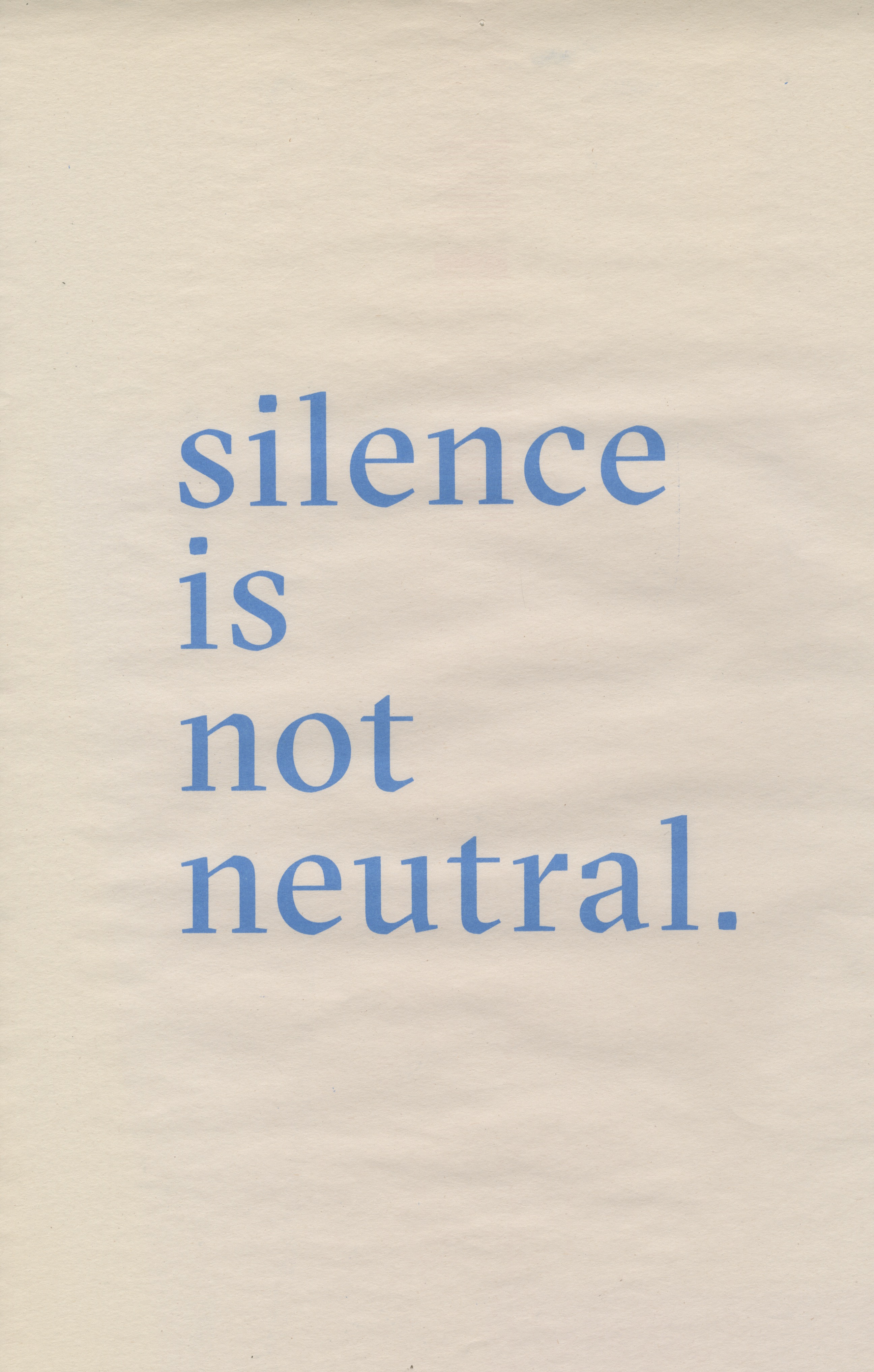
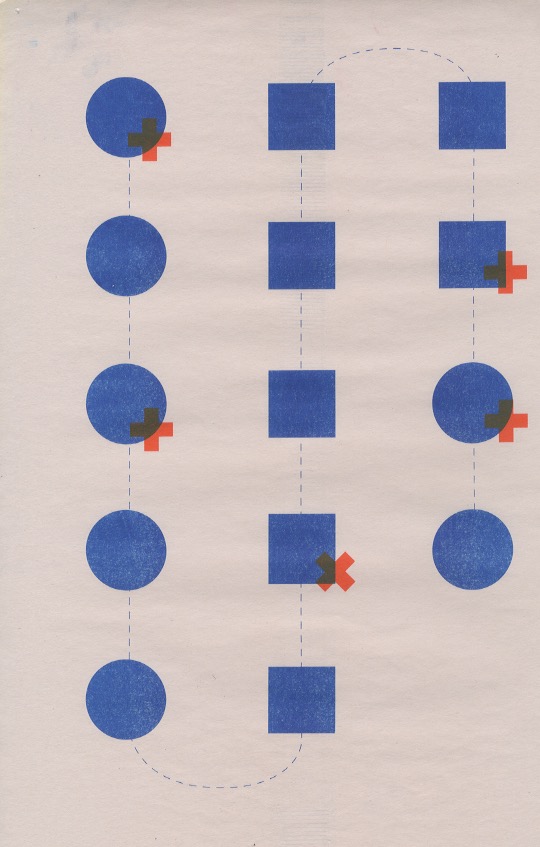

JivePoetic from Snigdha pamula on Vimeo.
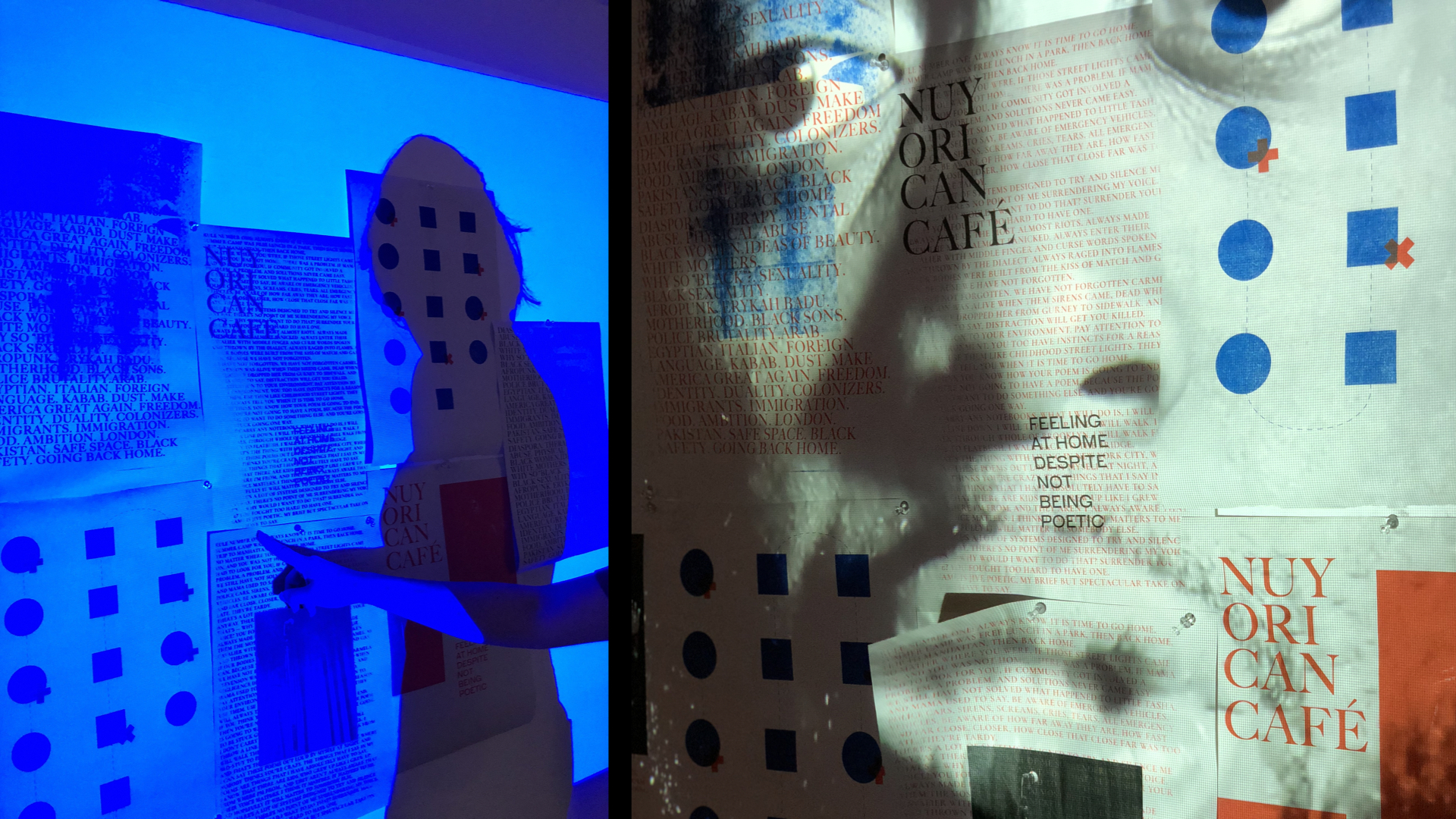
The juxtaposition of a performance piece by the host of the event, Jive Poetic (documented by Pratt Institute), with my observations from the Cafe to make a visual representation of what the experience at the space was without photographic evidence.
I further supplemented the visuals of the Nuyorican Poets' Cafe with poetry from Audre Lorde, Nayyirah Waheed, Rupi Kaur, and Yrsa Daley-Ward to demonstrate how poetry was being used as a medium to raise awareness about issues personal to the authors who are people of color.
It was also a contrast to the safe atmosphere that Nuyorican Poets' Cafe created versus Instagram's comment section which is not always positive.
The Cultural Probe
What did I want to find out?
Using images of prominent celebrities, politicians, and policy-makers, I designed a group activity that required people to describe the person on the card using only three adjectives without revealing their profession. This exercise gave insights into how people perceived these public figures outside of their profession.
I used another edition of the same showing the same figure, but in different settings and attire to see if the subjects thought they were presidential or not.
Another activity included drawing their idea of an all-powerful being and what they could get away with in real life. Through the first part of the question, I aimed to understand how they viewed power visually. The second part added a layer of fantasy grounded in reality.
The third activity was ranking races in any order they deemed appropriate and why. The fourth exercise was creating an animoji that best represented them on their phones and using that animoji to sing their anthem of power. My expectations for this exercise was to understand how they regarded their sense of power and what drove them. The song, however, had scope for unexpected responses to see what kind of music made them feel powerful.
What did I want to find out?
Using images of prominent celebrities, politicians, and policy-makers, I designed a group activity that required people to describe the person on the card using only three adjectives without revealing their profession. This exercise gave insights into how people perceived these public figures outside of their profession.
I used another edition of the same showing the same figure, but in different settings and attire to see if the subjects thought they were presidential or not.
Another activity included drawing their idea of an all-powerful being and what they could get away with in real life. Through the first part of the question, I aimed to understand how they viewed power visually. The second part added a layer of fantasy grounded in reality.
The third activity was ranking races in any order they deemed appropriate and why. The fourth exercise was creating an animoji that best represented them on their phones and using that animoji to sing their anthem of power. My expectations for this exercise was to understand how they regarded their sense of power and what drove them. The song, however, had scope for unexpected responses to see what kind of music made them feel powerful.

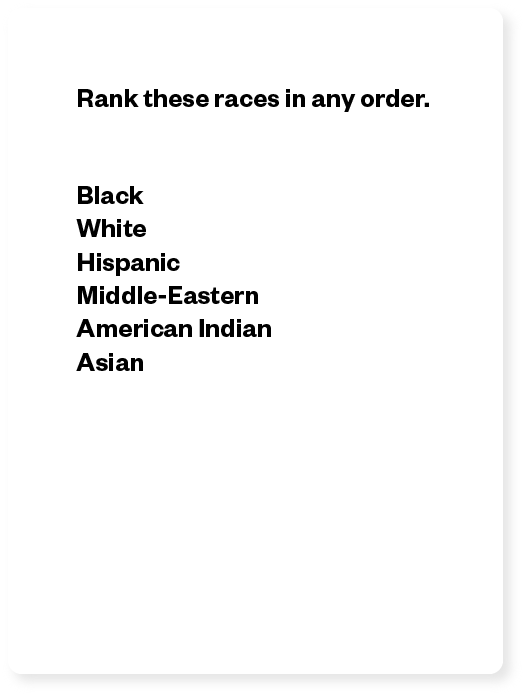



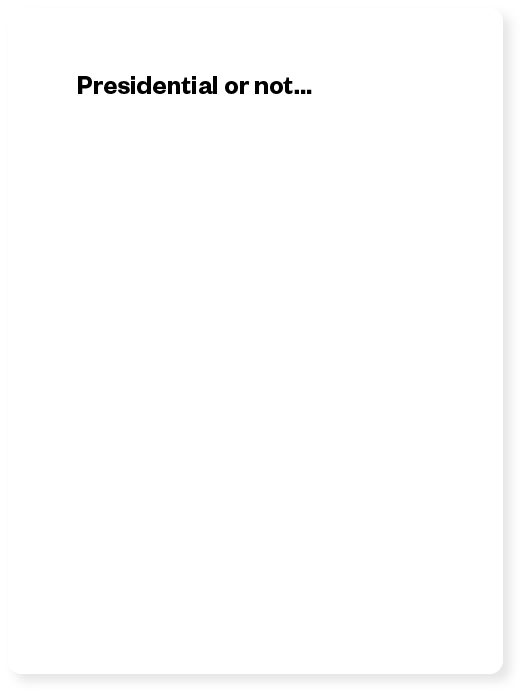
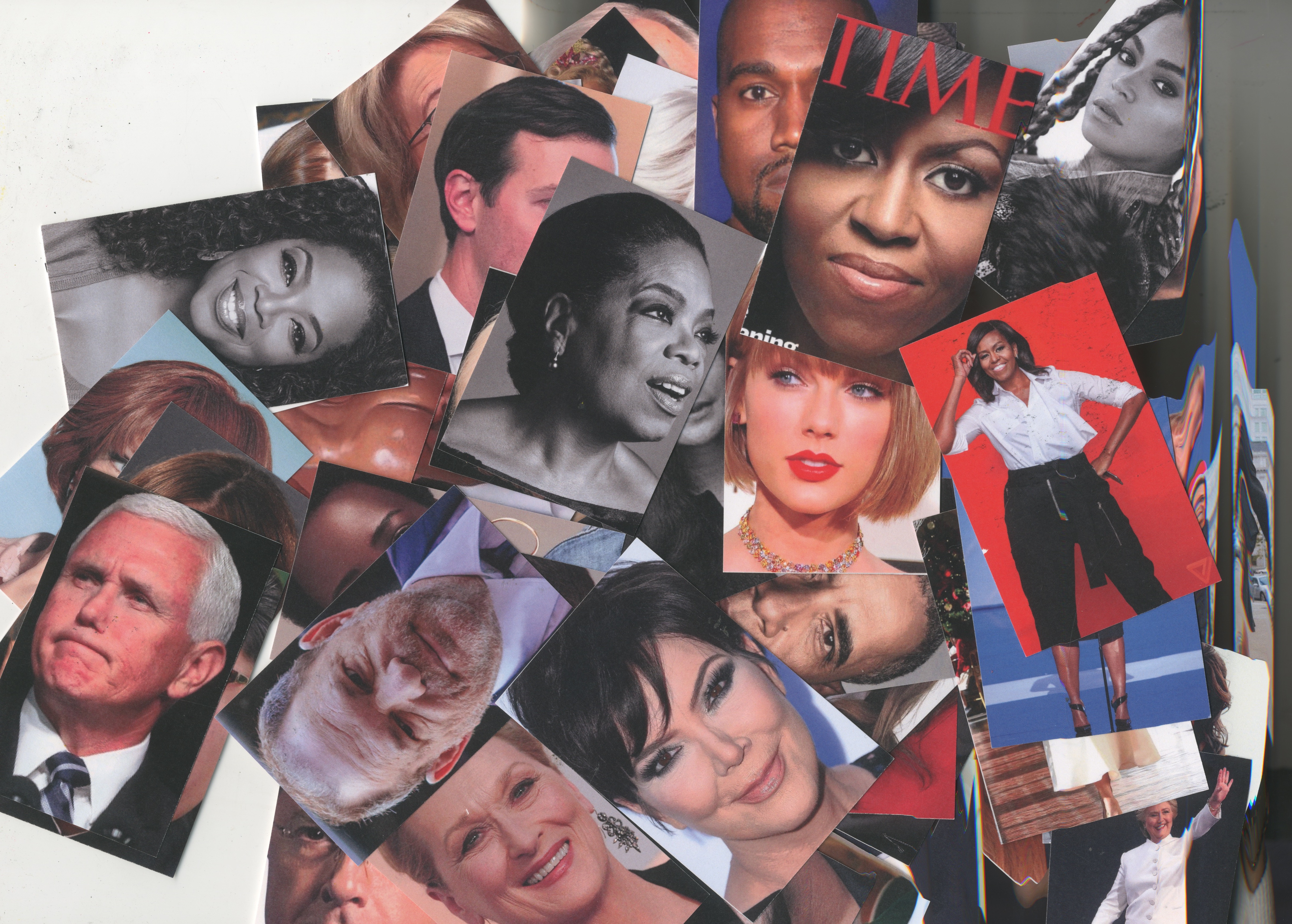
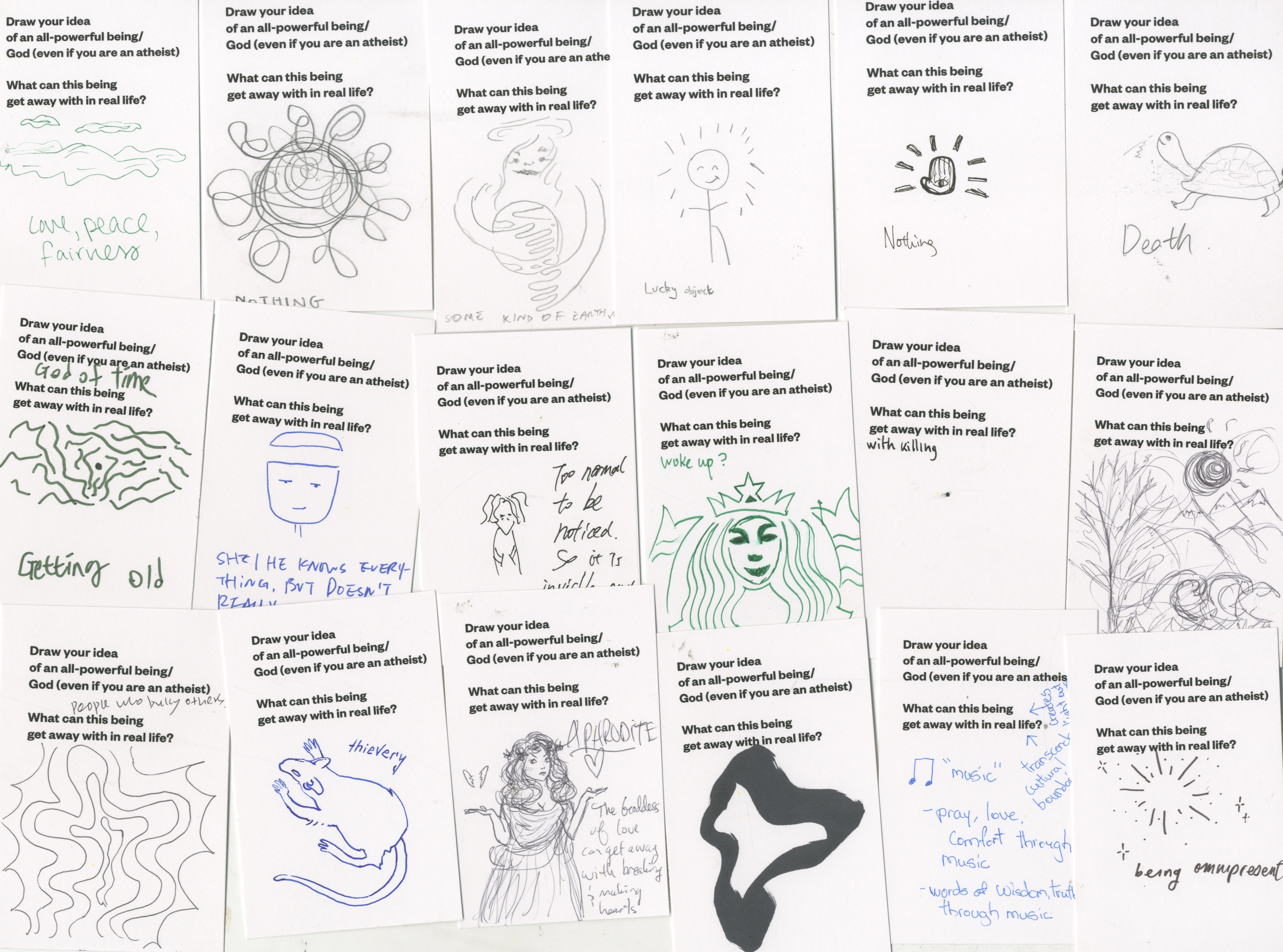

The Results
Using grounded theory, I analyzed the results of my ethnographic research and my cultural probe and created a list of code that was relevant for my area of study.
I used code words like patriarchy, imbalance, weaponization, empower, whitewash, discomfort, privilege, force, sexualize, visual appearance to describe the area of my subject. I then categorized the responses from the ethnographic research and cultural probe into these categories and created a new section for the ones that didn't fit my initial speculations. Once populated, the sections gave rise to interpretative code that offered insights into the meaning behind the responses collected.
Using the insights and the values of the subjects, I created a data visualization of the responses as a design response.
Celestial is a data visualization of the data collected from my cultural probe that attempted to understand how people of all races perceived the concept of power and privilege despite coming from varying backgrounds and nationalities. Each celestial body represented a code like patriarchy, discomfort and, visual representations. The responses showed expected and unexpected results.
The visual of the space through a lens that is unique to each observer is representative of one's biases and how they see the world through that lens.
I used code words like patriarchy, imbalance, weaponization, empower, whitewash, discomfort, privilege, force, sexualize, visual appearance to describe the area of my subject. I then categorized the responses from the ethnographic research and cultural probe into these categories and created a new section for the ones that didn't fit my initial speculations. Once populated, the sections gave rise to interpretative code that offered insights into the meaning behind the responses collected.
Using the insights and the values of the subjects, I created a data visualization of the responses as a design response.
Celestial is a data visualization of the data collected from my cultural probe that attempted to understand how people of all races perceived the concept of power and privilege despite coming from varying backgrounds and nationalities. Each celestial body represented a code like patriarchy, discomfort and, visual representations. The responses showed expected and unexpected results.
The visual of the space through a lens that is unique to each observer is representative of one's biases and how they see the world through that lens.
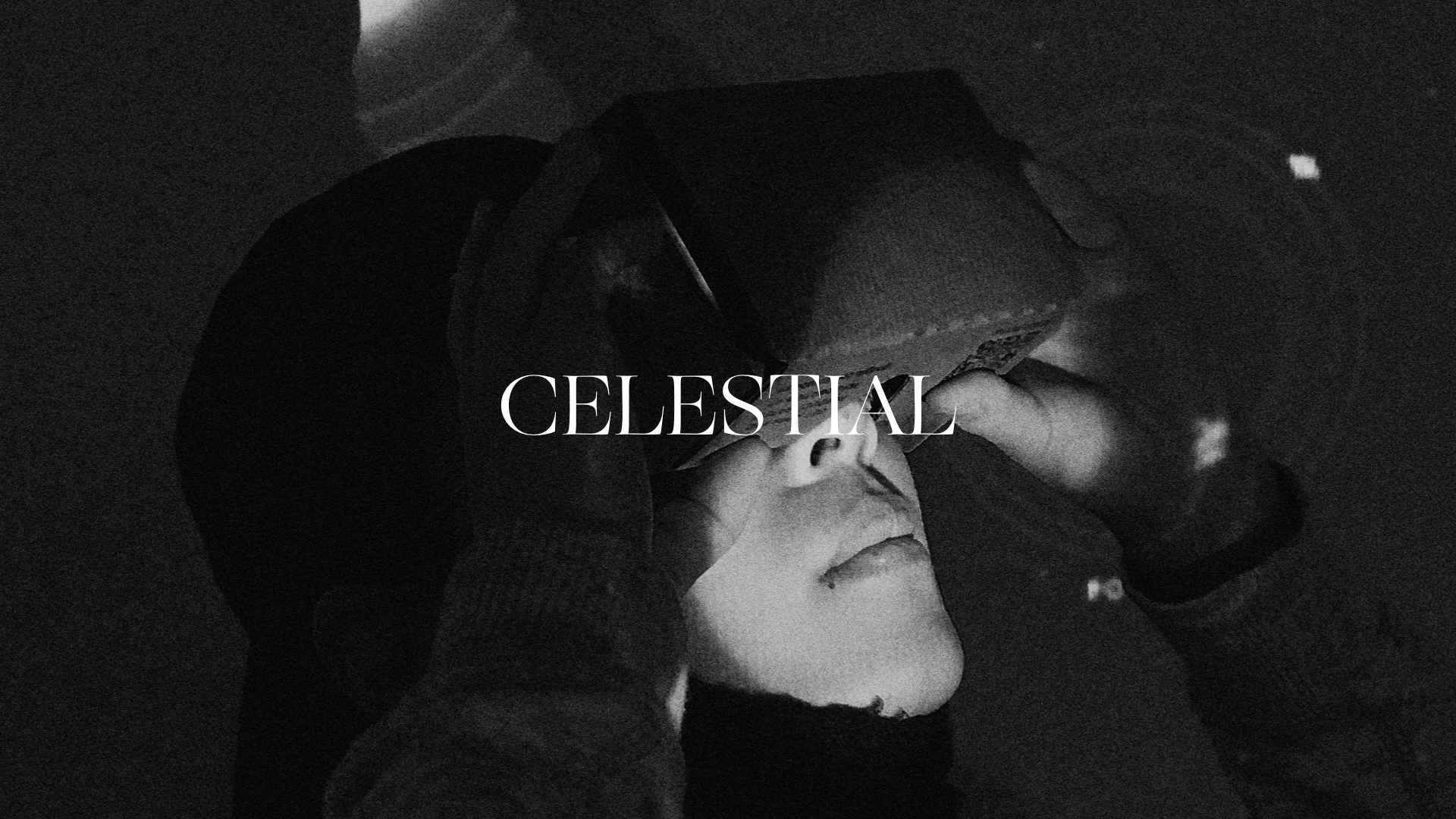
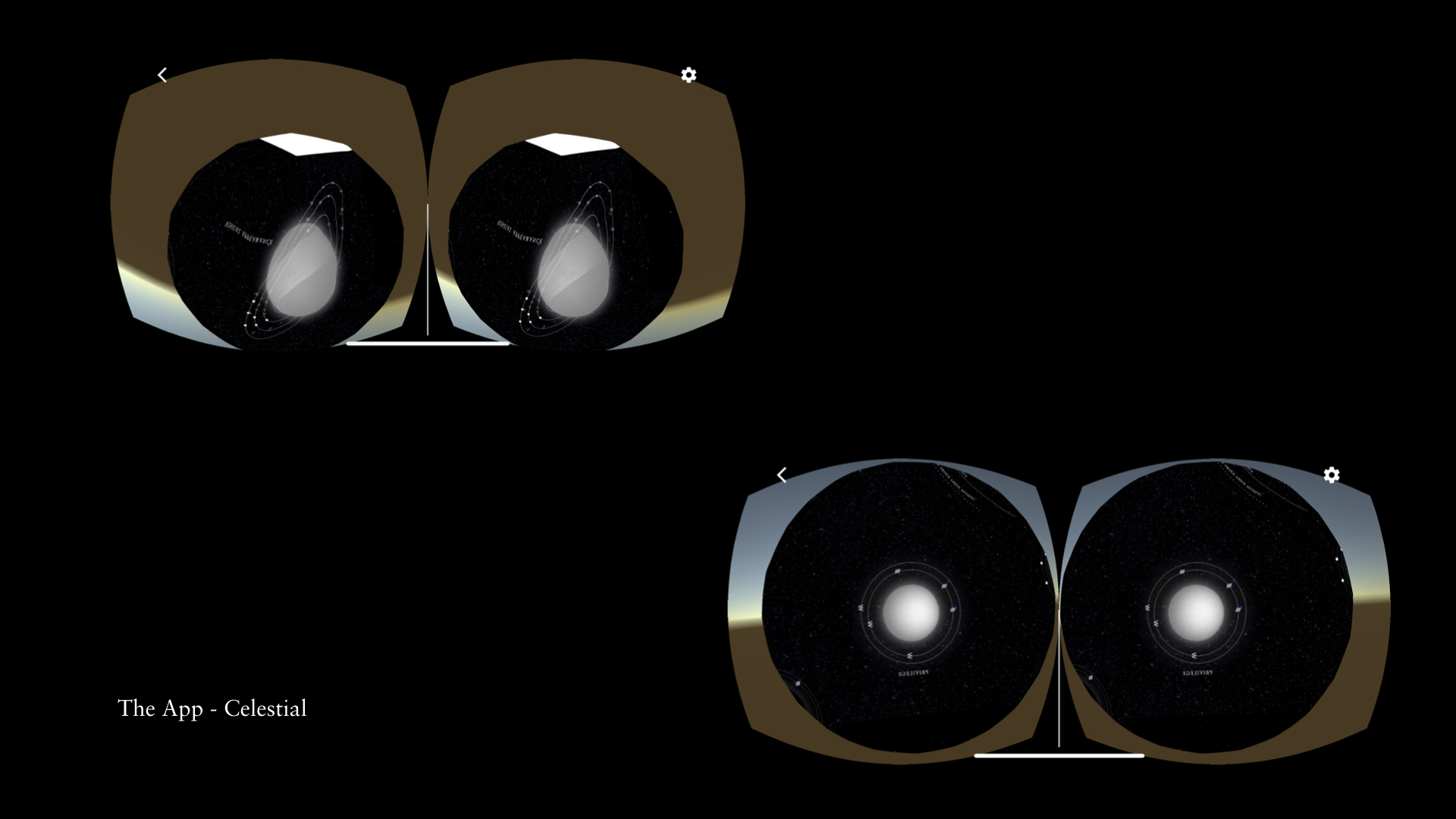


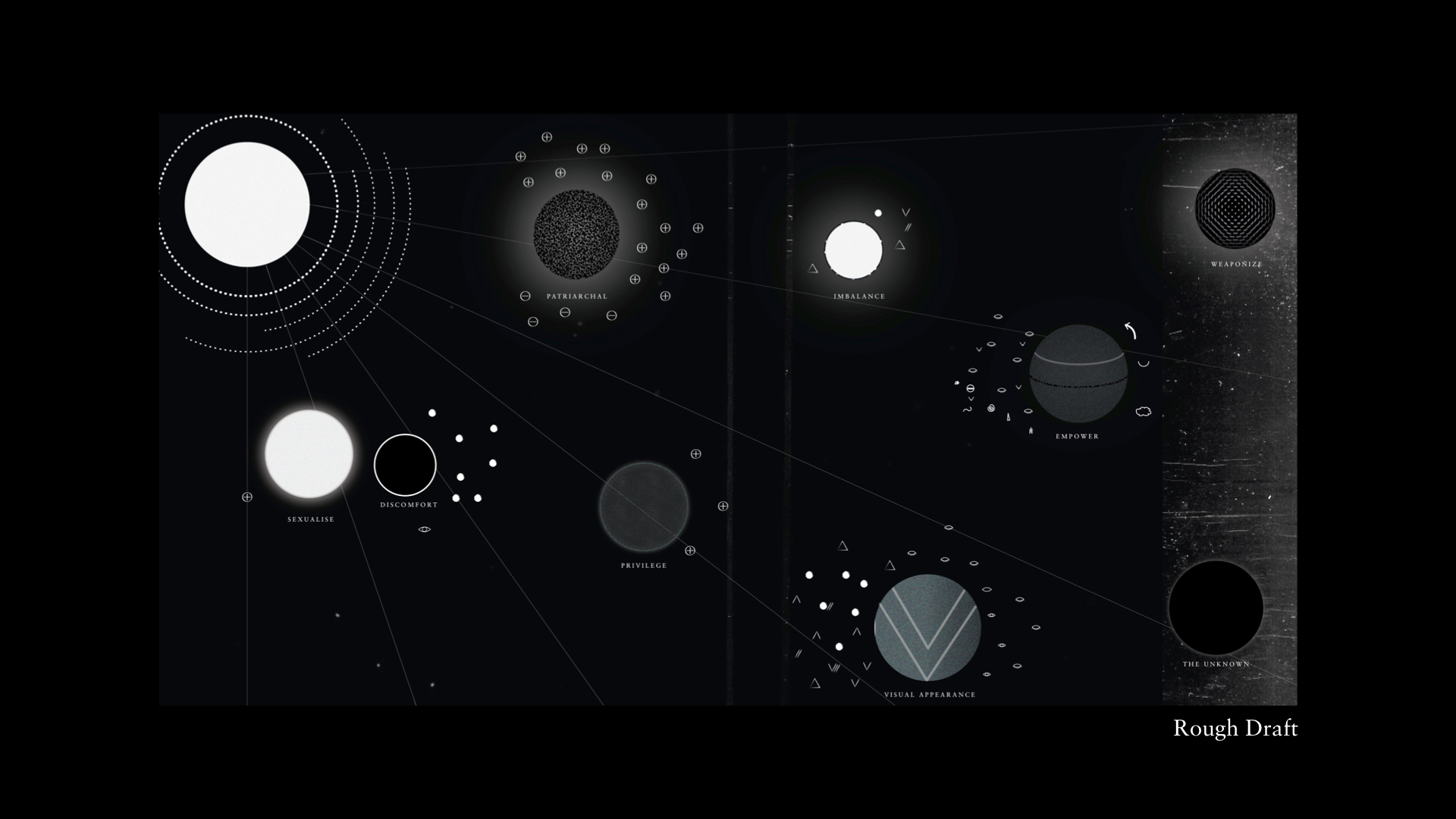
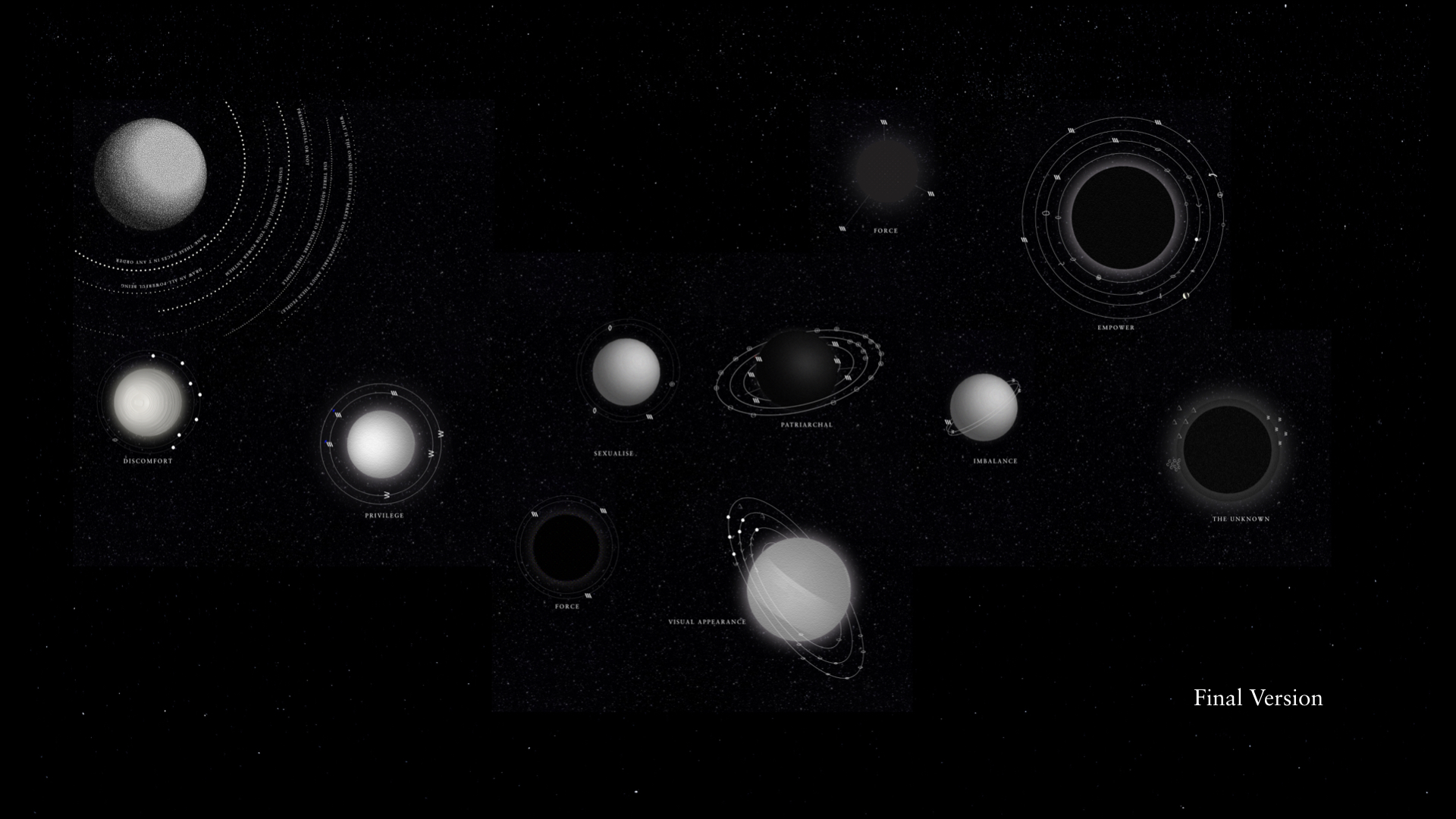

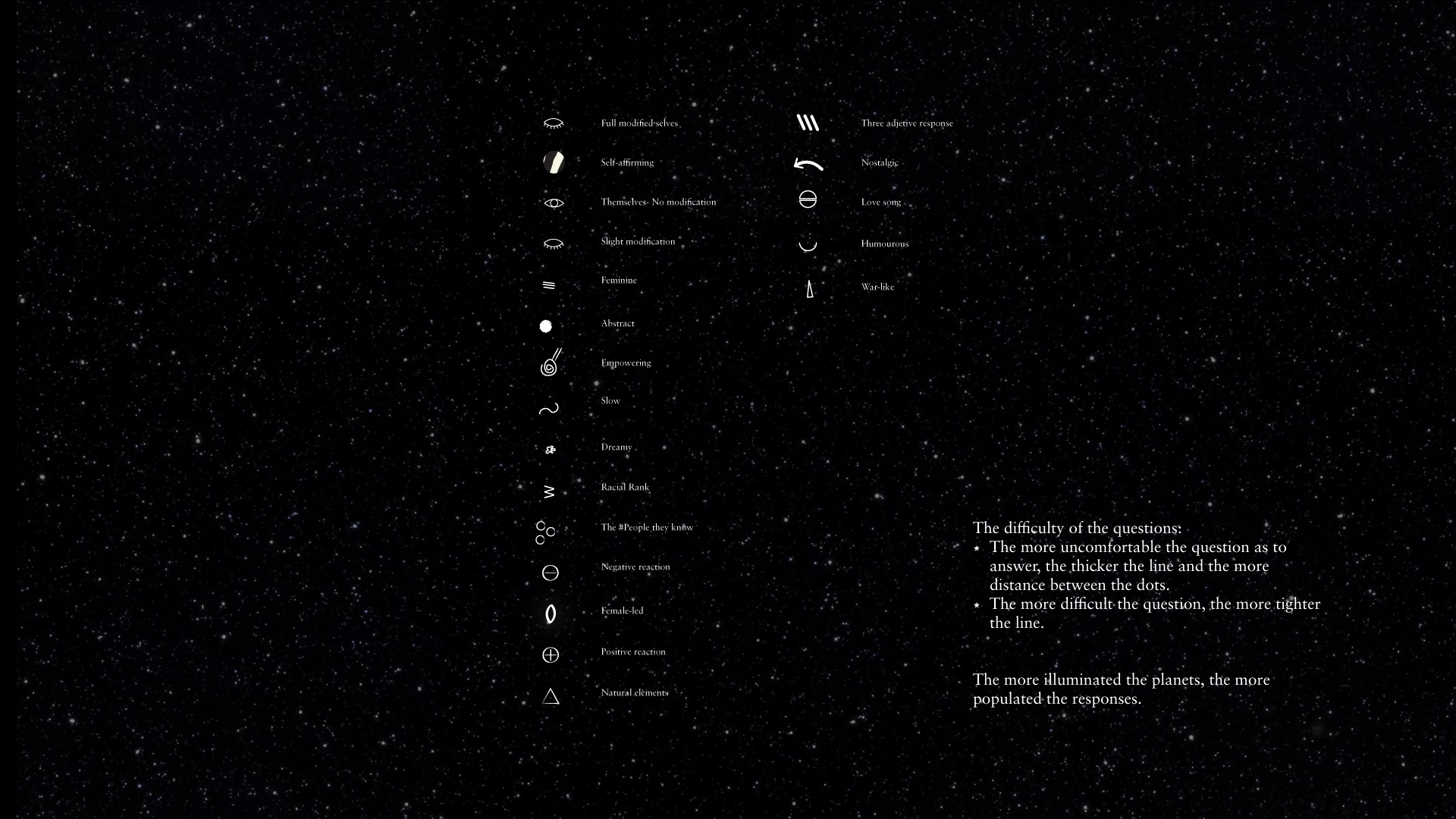
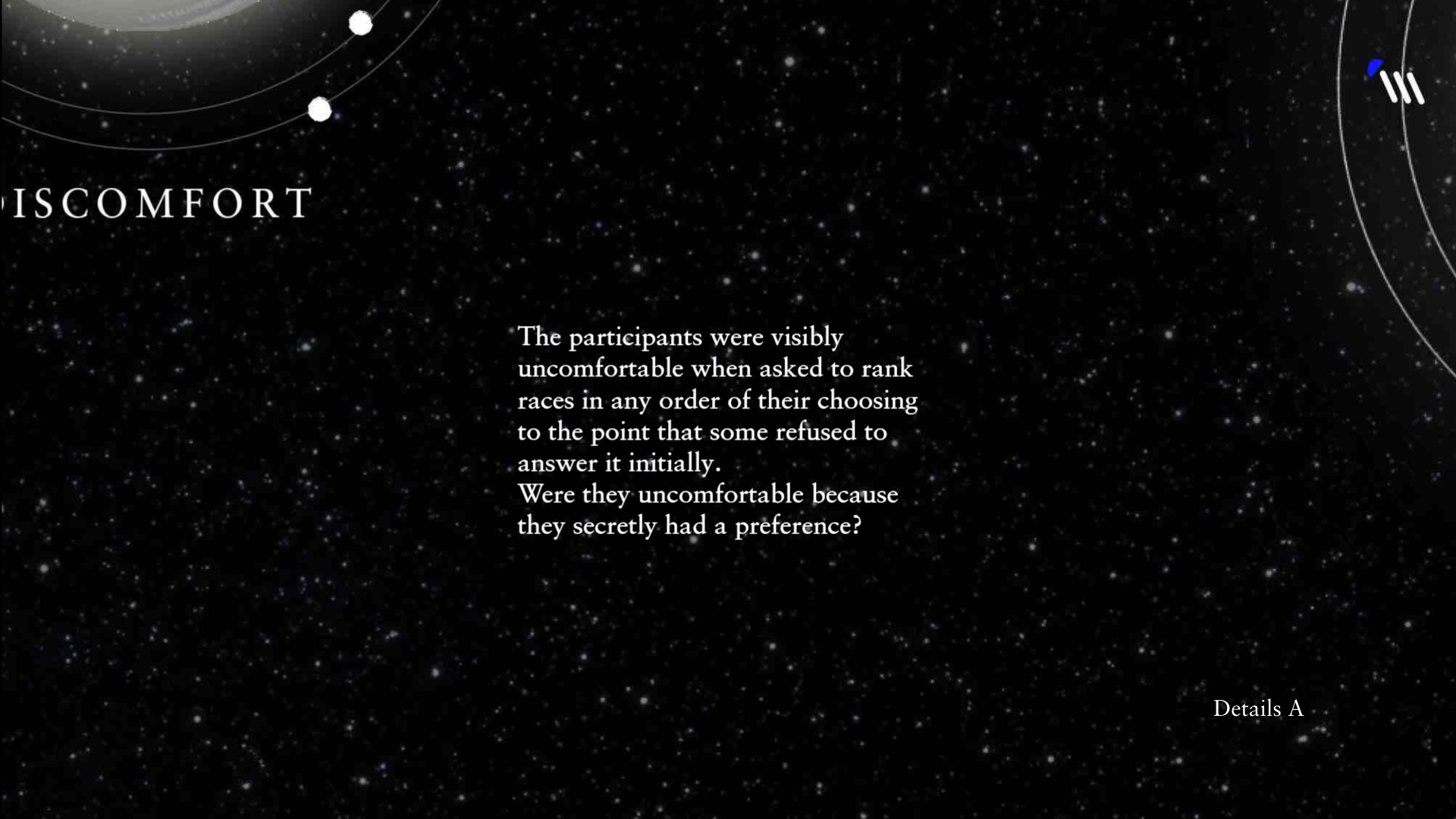
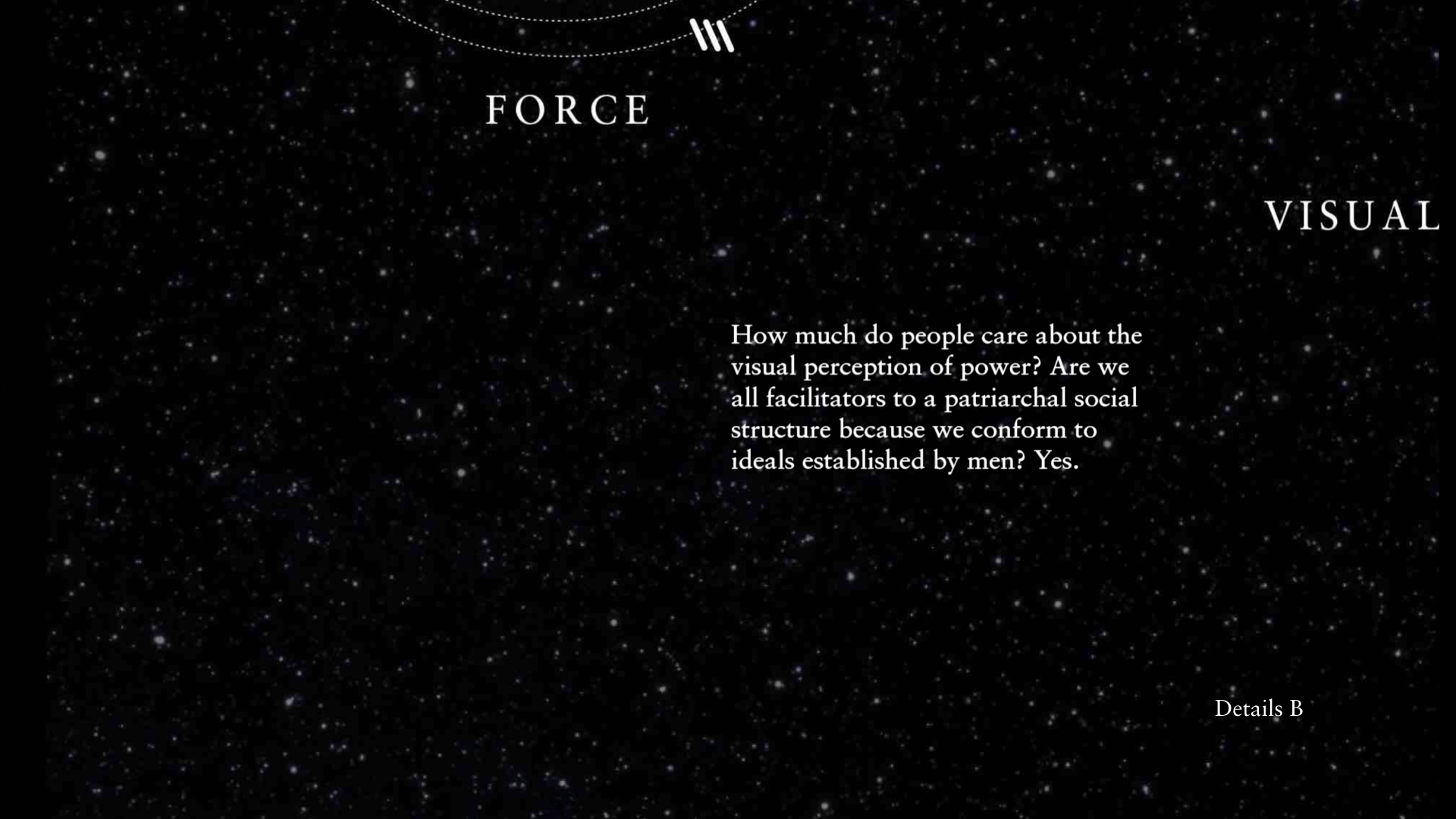
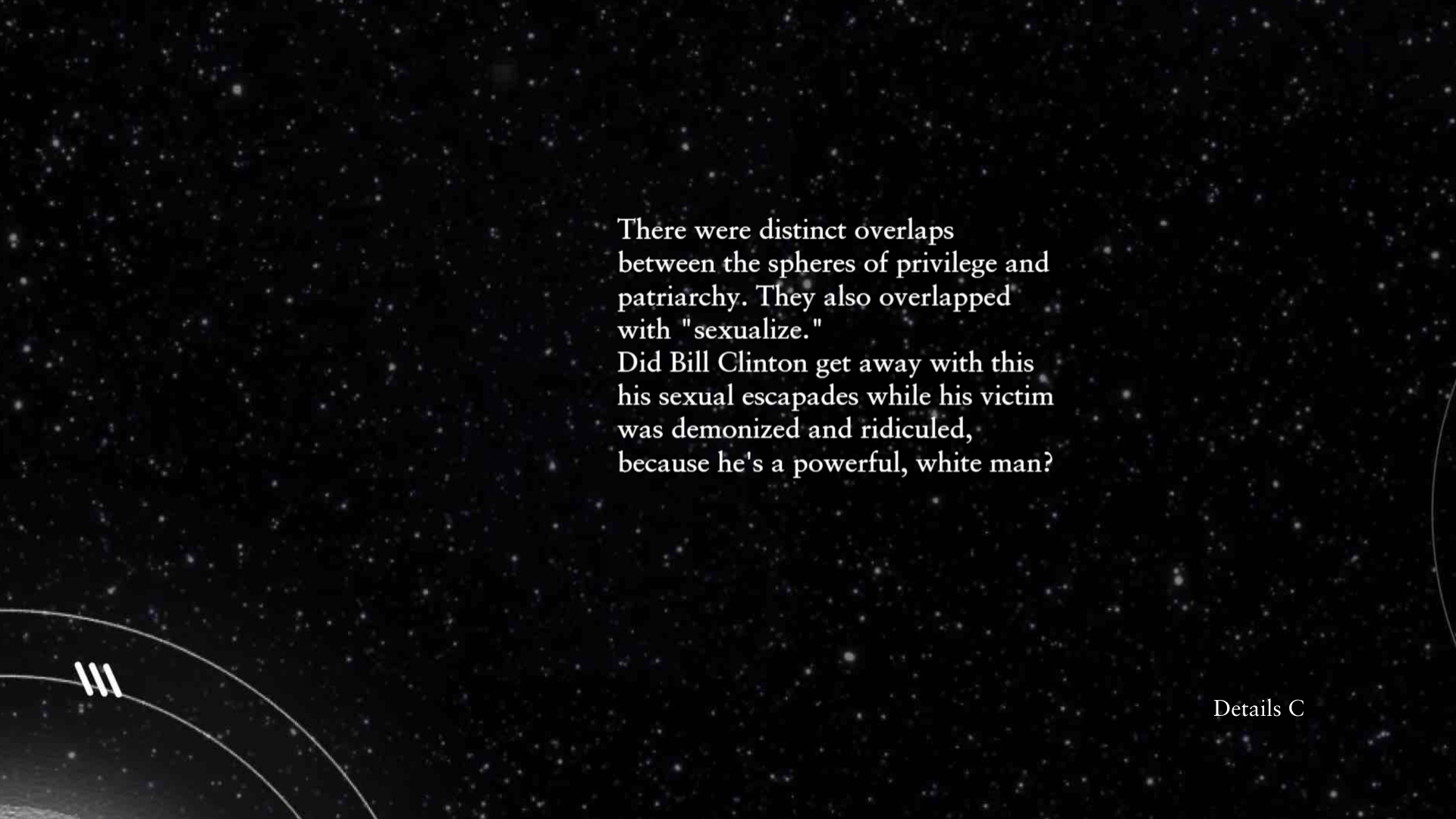
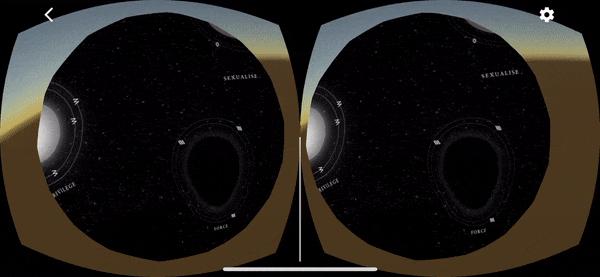
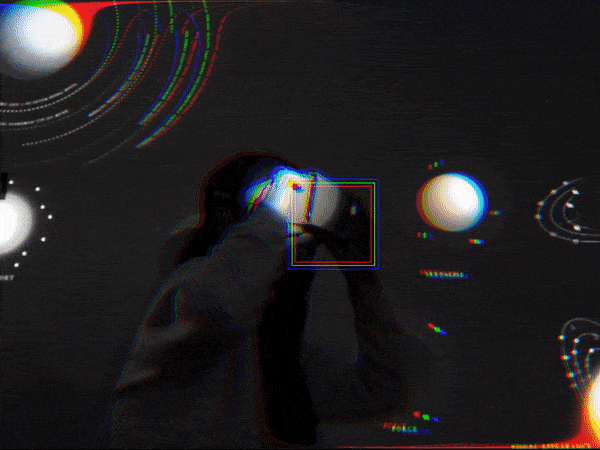
😒 Snigdha Pamula, 2024 ©
